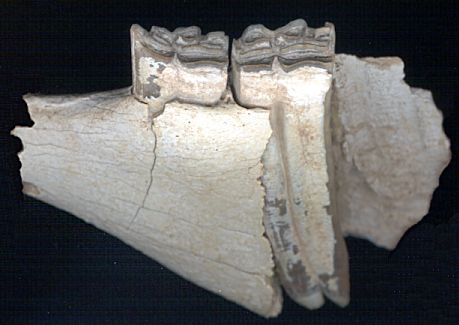

Almost everyone is interested in fossils. Thanks to the deep deposits of gravel, sand, silt, and clay laid down in our drainage basins, fossils are moderately common throughout much of the Chihuahuan Desert.
In the vicinity of El Paso, the Rio Grande has excavated a deep valley through such sediments, occasionally revealing the bones and teeth from the past. The base of the sediments near Sunland Park is about 2 million years old, dating from the end of the Blancan North American Land-Mammal Age. Land-mammal ages are characterized by unique associations of mammals. The last local appearance of a slender, three-toed horse, Nannippus, pretty much marks the end of the Blancan locally.
The beds above represent the transition to the beginning of the
Pleistocene—the Ice Age—and the beginning of another unique assemblage of
mammals: the Irvingtonian. One of the markers for the Irvingtonian is the first
appearance of the mammoth in the New World. And show up locally it does, a rather crude
form eventually leading to our local, late Ice-Age Columbian Mammoth—tragically,
also now gone.

Contributor: Arthur H. Harris, Laboratory for Environmental Biology, Centennial Museum, University of Texas at El Paso.
Desert Diary is a joint production of the Centennial Museum and KTEP National Public Radio at the University of Texas at El Paso.

Fragment of the left lower jaw of Nannippus with two premolars. The entire length of the posterior tooth is exposed by the loss of the side wall of the jaw. This extreme length and complex enamel pattern is common among most of the grazing horses. The tooth is about 55 mm (slightly more than 2 inches) from the top of the crown to the bottom of the roots. LEB specimen UTEP 99.1, Anapra, Doña Ana Co., NM.
Woodburne, M. O., Editor. 1987. Cenozoic mammals of North America. University of California Press, Berkeley. 336 pp.
Since the account above was written, the Pleistocene has been extended backwards in time to include the late Blancan Land Mammal Age.